Meet the Man Behind Indonesia’s Chicken Church
How Daniel Alamsjah’s divine dream became a poultry-shaped reality.
A giant, chicken-shaped church, known as Gereja Ayam, is perched on a hill in a forest on the Indonesian island of Java. It’s less than a 20-minute drive from Borobudur, the world’s largest Buddhist monument. On clear mornings, if you climb onto the platform inside the chicken’s gleaming white crown and face southeast, you can watch the sunrise illuminate the topmost candi (stupa) of the ancient temple.
The church’s farcical avian design has inspired many debates and fan theories over the years, each one attempting to solve the mystery of why someone would spend money to build a hollow chicken in the middle of the jungle. “It was left behind by the Dutch colonists,” one person wrote on Kaskus, a popular Internet forum. “No,” someone replied. “It’s haunted. I’ve seen kuntilanak [vampiric female demons from Indonesian lore] there.”
But the chicken church isn’t a Dutch remnant, and it’s not haunted by ghosts, either. It was built by a man named Daniel Alamsjah, who’s now 75.
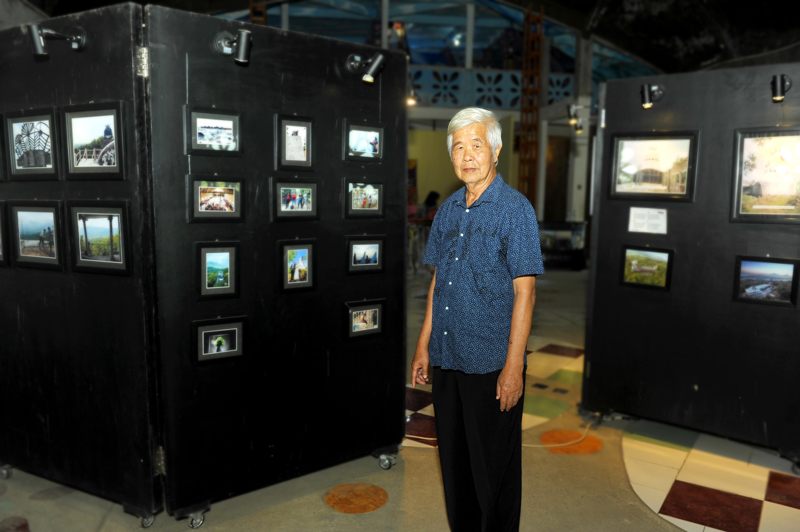
Alamsjah, a Christian, says that in 1988, after his nightly prayers, he received a vision of a dove with snow-white wings, resting at the top of a hill. (An interview with Alamsjah was conducted in a mix of Indonesian, Javanese, and English.) A disembodied voice asked him to build a house of worship for all people. When he awoke, he tried to dismiss the vision as a mere hallucination.
In his telling, Alamsjah started taking the dream more seriously when one of his employees failed to show up in Jakarta after Ramadan, the mid-year fasting season. Then a manager for the German chemical company BASF, he was in charge of making sure his team ran smoothly. He went to Magelang, the man’s hometown, to track him down. Alamsjah found his employee, who asked for one more day at home and invited his boss to Bukit Rhema (Rhema Hill) to see the sunrise, before returning to Jakarta.
“I was amazed!” Alamsjah says. “It was the same hill and the same view that I saw in my vision.” He prayed all night and read his Bible for guidance. One verse kept popping up. The verse in question, Isaiah 2:2, reads: “In the last days, the mountain of the Lord’s temple will be established as the highest of the mountains; it will be exalted above the hills, and all nations will stream to it.”
In the morning, a passerby mentioned that Bukit Rhema, situated between the small Indonesian villages of Kembang Limus and Karangrejo, was surrounded by nine different Javanese mountains, which Alamsjah understood to be a reference to the verse and thus a confirmation of his dream.
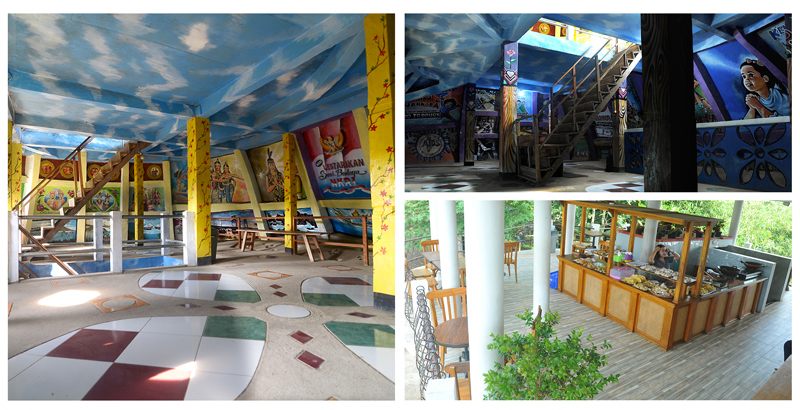
Before returning home to the city, Alamsjah left his contact information in Magelang with the local head of Karangrejo. Two weeks later, someone who owned part of the land on Bukit Rhema came to Jakarta to offer Alamsjah his share. After several negotiations, Alamsjah paid Rp. 3,500,000 (around $2,000 at the time) for 5,000 square meters (a little over an acre) of land.
Despite his lack of architectural experience, Alamsjah says he designed the church himself, trying to stay faithful to the dove he’d seen in his vision. Wasno, the head of the nearby village of Gombong and a member of Alamsjah’s 30-person construction crew, says, “Actually, it did look like a dove—in the beginning. But then we added the crown. Daniel wanted it to symbolize holiness, but people thought it was a rooster crest. So they started calling it a chicken instead of a dove.”

Construction began in 1992—the process of getting legal permission ate up four years—and the team used handmade cement, bricks, local sand, and scrap metal to build and fill in the dove’s frame. But the project was plagued by problems from the start.
According to Alamsjah, a major newspaper in Indonesia ran a report on him in 1996, stating that a Christian man was building a church in a Muslim neighborhood. Local officials, spurred by the rush of complaints that followed the article, tried unsuccessfully to withdraw Alamsjah’s building license.
“I tried telling them that it wasn’t for just Christians,” Alamsjah says. “I was making rooms for Muslims, Buddhists, atheists, Catholics, everyone—it was designed to be inclusive.” But complaints were constantly being filed—the stack of reports in the Borobudur district police’s office from the 1990s about Alamsjah are so numerous that they’re too heavy for a person to carry on their own.

Beyond conflict with the community, there were also financial issues. In 2000, a lack of funds forced Alamsjah to quit the project in the middle of construction. The second and third floors hadn’t been started at all, and half of the 12 underground prayer rooms were mere holes in the ground. Alamsjah says he couldn’t afford to tile the floor, so visitors would either stand or sit down on the dirt.
Without a caretaker, the chicken quickly fell into disrepair. The weeds around the structure grew back, and vandals snuck in to hang out and scribble on the walls. Once in a while, curious tourists would stop by, eager to see the huge chicken for themselves. Richard Lomanta, a Jakartan who traveled there in 2008 when it was abandoned, says, “Everyone I knew called it the chicken church, even back then. Just look at it—it looks nothing like a dove.”
Alamsjah had switched careers at this point and now managed a rehabilitation center nearby. He told some of his employees to stay near the church and collect entrance fees. A few people would stop by each week, but the number barely reached 100 per month. For nearly two decades, it seemed that the church was fated to be reclaimed by nature.

Fifteen years after the project was halted, however, the chicken church suddenly went viral on international media. The Daily Mail and the Huffington Post both released features about it on July 13, 2015, and a year later, it served as a shooting site for the sequel of the Indonesian cult classic film, Ada Apa Dengan Cinta (What’s the Deal With Love).
The recognition spurred the arrival of a flock of tourists: up to 2,000 a week, according to Alamsjah’s ticket records. The proceeds from the nominal entrance fee (Rp. 10,000, or less than USD $1 per person) gave Alamsjah enough money to resume construction.
“I was so relieved,” Alamsjah says. “The locals saw how popular the site was, and they began to benefit as well [from the tourism].”

These days, the chicken church is no longer abandoned. The renovations made in the last two years include jeweled tiles; paneled windows; a small, paved access road; and work on the underground prayer rooms, which are nearly finished. Displays in the main hall (the body of the chicken) document the project’s growth from a divine dream to a full-fledged poultry temple. So many tourists come each year that Alamsjah even built a small cafe inside the chicken’s rear (it sells traditional Indonesian snacks and coffee).
“You know, everyone said I was crazy,” Alamsjah says. “In the 90s, I kept rereading that [Bible] verse, trying to find the courage to continue. My children were very angry at me. I had to keep telling them, this isn’t my plan. This is God’s plan. It’s been 30 years, and I’m glad I continued—thousands of visitors come each year to pray or to reflect on their lives, and my children finally respect what I’ve accomplished.”
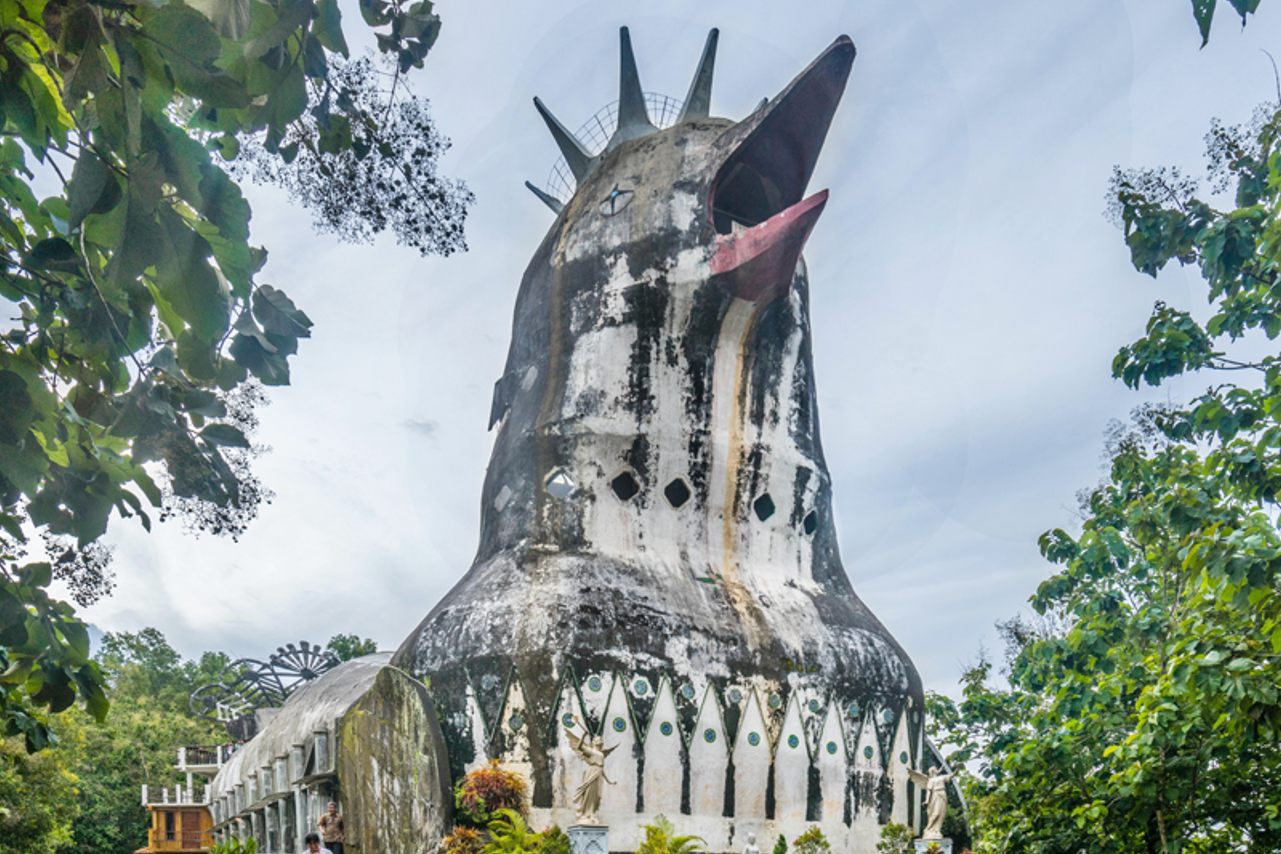
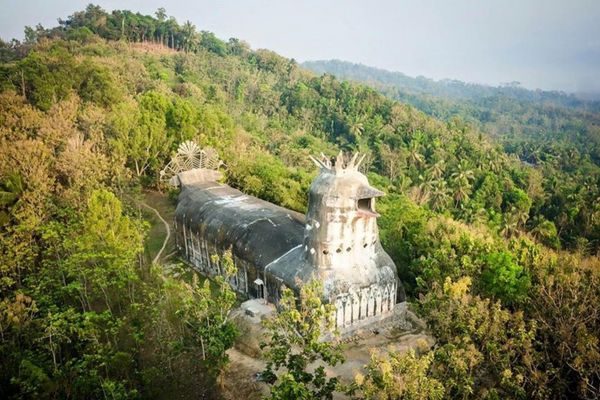

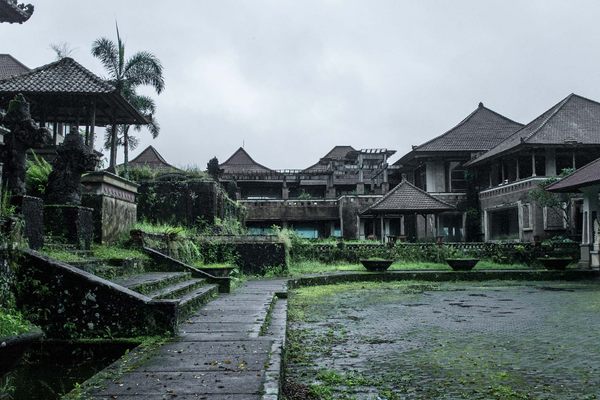


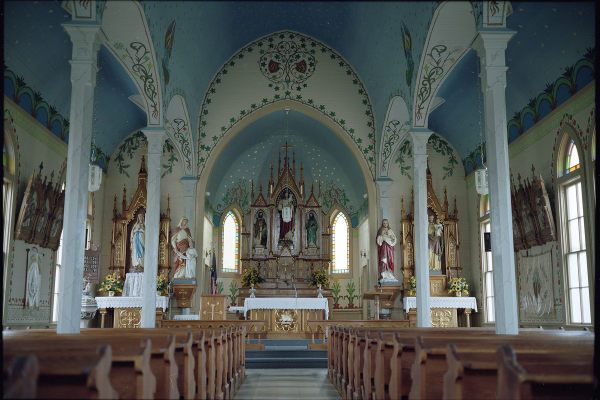

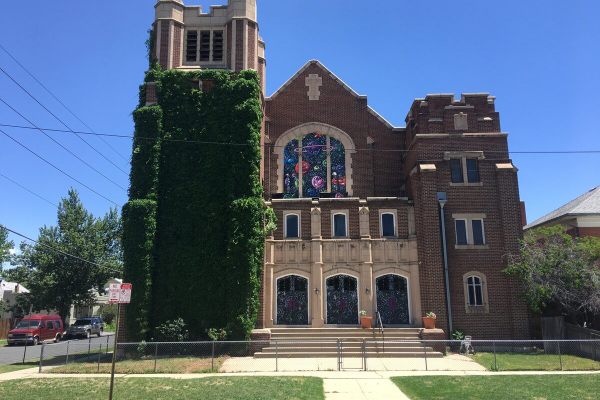









Follow us on Twitter to get the latest on the world's hidden wonders.
Like us on Facebook to get the latest on the world's hidden wonders.
Follow us on Twitter Like us on Facebook